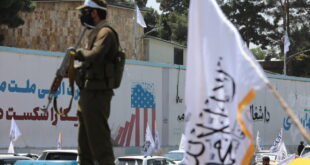Kabul – After six years of war, thousands of casualties and billions of dollars spent, the Taliban remains a bold force to be reckoned with, and seems far from being eliminated.
As the first flakes of snow fall on the mountains, yet another year is passing without any clear hope for bringing peace to war-torn Afghanistan, which has undergone more than three decades of turmoil.
The year 2007 was the most violent since a US-led invasion ousted the Taliban government for sponsoring al-Qaeda and Osama bin Laden, who masterminded the 9/11 attacks on US cities.
More than 6,000 people – mostly insurgents, but including hundreds of Afghan and international forces and at least 1,000 civilians – have died in the violence. This year’s death toll was 50 percent more than in 2006, and was also the bloodiest year for US forces, with more than 100 soldiers killed.
More than 120 suicide attacks occurred during the year, a tactic that was unknown in Afghanistan before 2003. The deadliest one came in the relatively peaceful northern Baghlan province in November, which killed more than 80 people, including six members of the country’s fledgling parliament.
Rebel militants also killed several hundred Afghan and foreign troops in roadside attacks, using tactics believed to be copied from Iraqi insurgents.
The Taliban forces, described as weak by the Afghan and US officials in the first years following their ouster, are now expanding their presence into previously peaceful provinces such as Herat, Badghis and Wardak, which lies near the western gate of the capital city.
The rebels also sustained heavy losses, including about 80 key field commanders, and an unknown number of cadres that has been estimated in the thousands. In May, senior military commander Mullah Dadullah was killed in a US-led operation in the turbulent southern province of Helmand.
But there has been no sign of any weakened capacity to fight and inflict losses on the government and international coalition.
The militants are widely thought to consolidate their ranks with fresh recruits from Afghan refugee camps in the restive tribal areas in Pakistan and the Pashtun areas near the border. Afghan opium poppy production also reached ‘alarming’ levels this year, and is estimated to finance much of the Taliban warfare expenses.
Taliban recruiting among unemployed and increasingly nationalist Afghanis is also on the rise southern and eastern regions as the conflict intensifies.
Mounting civilian casualties have eroded public support for the central government and its Western backers. About half of the civilian deaths this year were caused by international forces, according to Oxfam International.
Analysts say that the foreign forces’ lack of understanding of Afghan culture contributes to the growing sympathy for the Taliban, due house searches and aggressive behaviour of soldiers.
The spring offensives from both sides did not result in major ground gains for either. Both the Taliban and the government claimed to have inflicted heavy casualties, to boost fighting morale, but the figures provided were often difficult to verify independently.
According to Qasim Akhgar, an Afghan writer and political analyst, ‘it was a year for propaganda for the Taliban,’ who captured several districts in the south and east, and also began using the new tactic of abductions.
In exchange for a kidnapped Italian journalist, the Taliban secured the release of five of their imprisoned cadres. Later they executed the Afghani assistant, for whom the authorities refused to make a separate deal, which fuelled anger against the government perceived as indifferent to the plight of its own citizens.
More abductions followed, bringing far-flung media coverage. The insurgents forced the South Korean government into direct talks for the release of 23 of its citizens held hostage. That allowed the rebels to hold an open press conference for the first time since their ouster, overshadowing the authority of the Western-backed government.
There has also been evidence of streams of foreign combatants and shipments of weapons coming across borders for the Taliban.
‘Foreign fighters from, amongst others, Pakistan, Uzbekistan, Chechnya and China are once again using Afghanistan as a battleground for their interpretation of global jihad,’ said the Senlis Council, an international think tank with offices in Afghanistan, in a report released last month.
NATO’s International Security Assistance Force, which has around 41,000 troops from some 38 countries, is also publicly divided over sending more forces and equipment to expand their reach.
US, British and Canadian troops fight the insurgents in southern and eastern regions on daily basis, but other NATO countries like Germany, France and Spain refuse to send their soldiers into the combative provinces.
While NATO commanders on the ground ask for more troops from member nations, Akhgar said the long term solution for lasting security lies with further strengthening of Afghan security forces.
‘If the West really wants to solve the problem of this country forever, they should help train and equip our own security forces,’ he said.
 Eurasia Press & News
Eurasia Press & News


